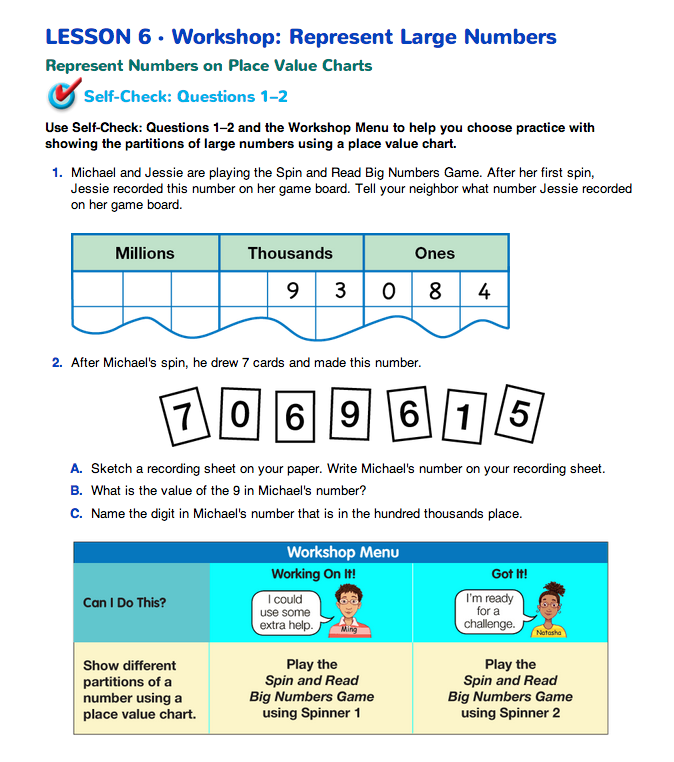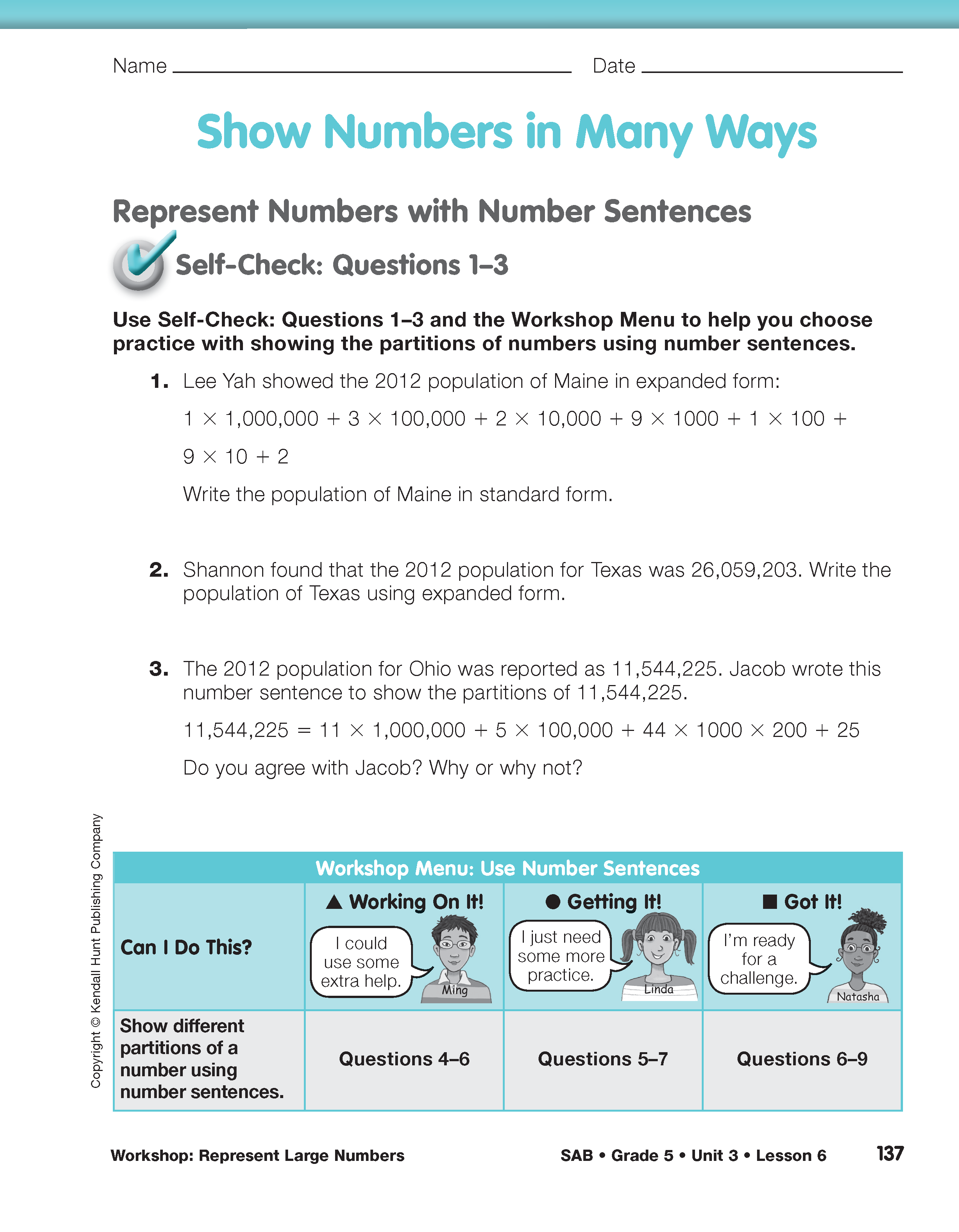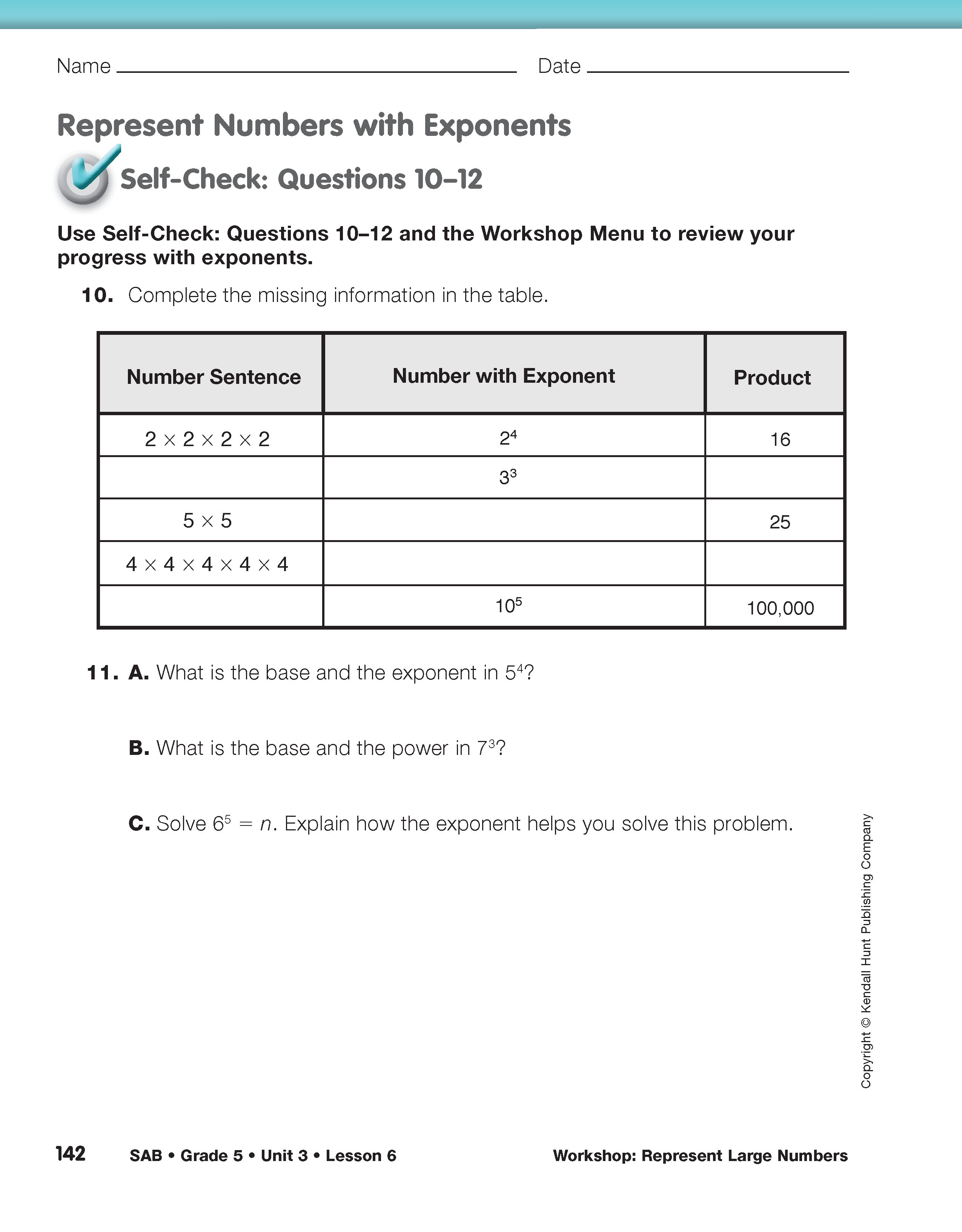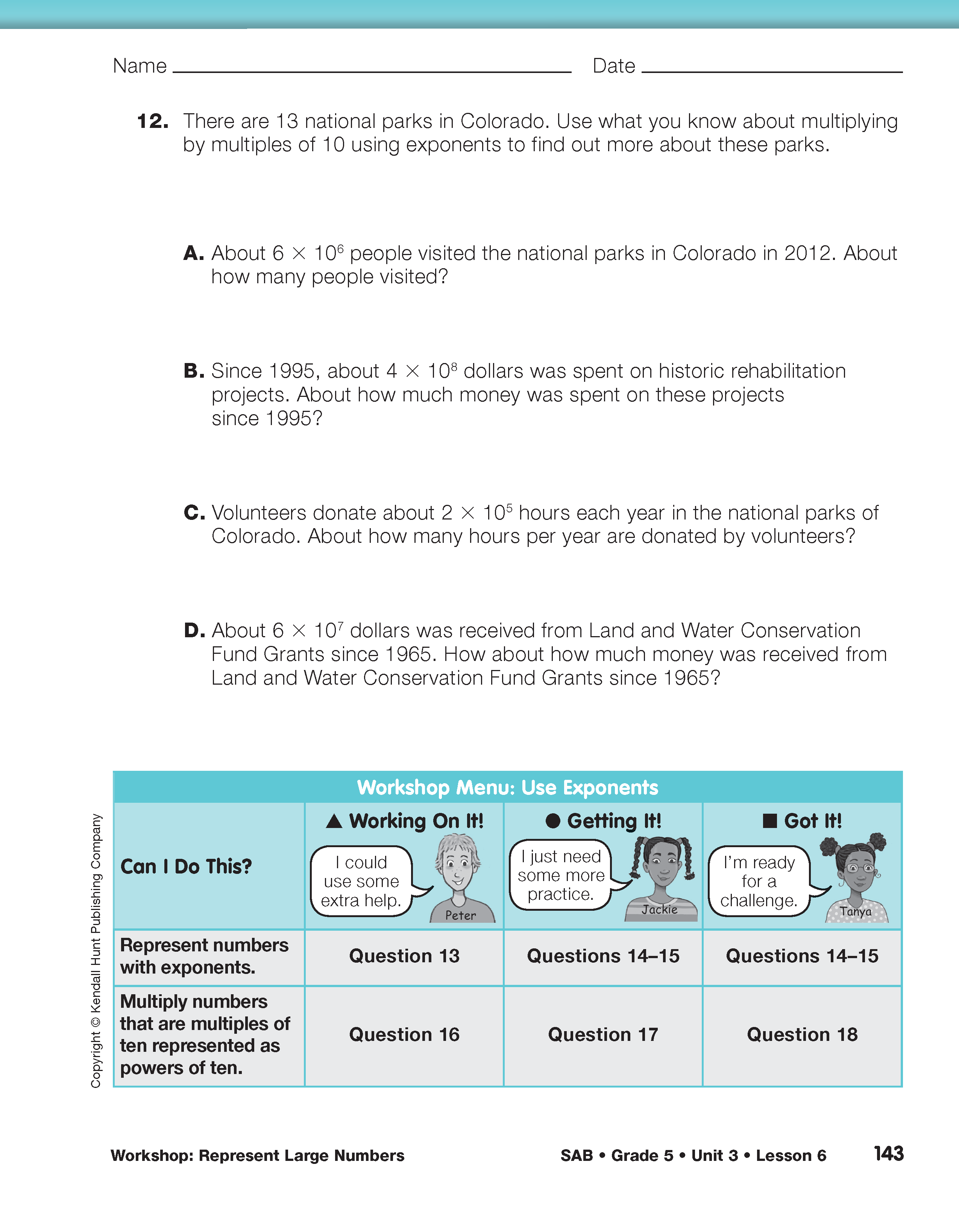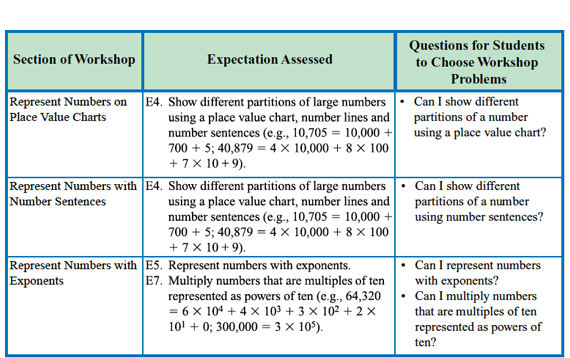Workshop: Represent Large Numbers
Est. Class Sessions: 1–2Developing the Lesson
Set Up the Workshop. Menus and problems for this Workshop are in the Student Guide on the Workshop: Represent Large Numbers page and on the Show Numbers in Many Ways pages in the Student Activity Book. Minis of these pages not shown here are in the Answer Key. This Workshop is divided into three sections that address Expectations as shown in Figure 2.
Choose Targeted Practice. Students begin each section by answering Self-Check Questions either individually or with a partner. These questions serve two purposes. First, they clearly communicate the content of the related targeted practice to students. Second, they help students quickly self-assess their progress, with Expectations to help them choose which problems to work on in the Workshop.
After students complete the Self-Check Questions in a section, discuss a problem or two from each of the questions with the whole class. Ask students to share their solutions and explain their reasoning. Facilitate a class discussion with student solutions. Next have students think about the “Can I Do This?” question in the left-hand column of the menu following the Self-Check Questions. Ask students to review their work on the Self-Check Questions to decide which problems to choose from the following groups:
- Students who are “working on it” and need some extra help should circle the problem set marked with a triangle (
 ). These problems provide scaffold support for developing the essential underlying concepts as well as some opportunities for practice.
). These problems provide scaffold support for developing the essential underlying concepts as well as some opportunities for practice. - Students who are “getting it” and just need more practice should circle the problem set marked with a circle (
 ). These problems provide opportunities to practice with some concept reinforcement and some opportunities for extension.
). These problems provide opportunities to practice with some concept reinforcement and some opportunities for extension. - Students who have “got it” and are ready for a challenge or extension should circle problems marked with a square (
 ). These problems provide some practice and then move into opportunities for extension.
). These problems provide some practice and then move into opportunities for extension.
Check students' choices to see how well they match your own assessment of their progress on the related Expectations. Help students make selections that will provide the kind of practice they need.
Once students select the questions to complete in a section of the Workshop, match groups of students who have chosen similar sets of problems from the menu. Have students work independently or with a partner to solve the problems they chose.
After a few groups of students have completed their selected problems, but before all students have completed their problems, introduce the next section to the whole class. See the Meeting Individual Needs box. Again have students try the Self-Check Questions, discuss solutions, and choose problems from the menu with your guidance. Follow this pattern through each section of the Workshop.














